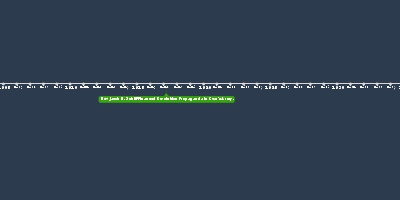mar 30, 1942 - Britain: THE CHERWELL MEMORANDUM Also known as the LINDEMANN MEMORANDUM ON THE BOMBING OF GERMAN CITIES IN WORLD WAR II
Description:
On 30 March 1942 Professor Frederick Lindemann, Baron Cherwell, the British government's chief scientific adviser, sent to the British prime minister Winston Churchill a memorandum which, after it was accepted by the Cabinet, became known as the dehousing paper.[a]The paper was delivered during a debate within the British government about the most effective use of the nation's resources in waging war on Germany—whether the Royal Air Force (RAF) should be reduced to allow more resources to go to the British Army and Royal Navy, or whether the strategic bombing option should be followed and expanded. The paper argued that from the analysis of the reaction of the British population to the Blitz, the demolition of people's houses was the most effective way to affect their morale, even more effective than killing relatives. Given the known limits of the RAF in locating targets in Germany and providing the planned resources were made available to the RAF, destroying about thirty percent of the housing stock of Germany's fifty-eight largest towns was the most effective use of the aircraft of RAF Bomber Command, because it would break the spirit of the Germans. After a heated debate by the government's military and scientific advisers, the Cabinet chose the strategic bombing campaign over the other options available to them.
THE CHERWELL (LINDEMANN) MEMORANDUM:
The following one-page memorandum written by Lord Cherwell (Professor Lindemann at the time) on March 30, 1942 was critical in reinforcing Winston Churchill's resolve to employ area bombing against German cities.
The following seems a simple method of estimating what we could do by bombing Germany. Careful analysis of the effects of raids on Birmingham, Hull and elsewhere have shown that, on the average, one ton of bombs dropped on a built-up area demolishes 20-40 dwellings and turns 100-200 people out of house and home.
We know from our experience that we can count on nearly 14 operational sorties per bomber produced. The average lift of the bombers we are going to produce over the next fifteen months will be about three tons. It follows that each of these bombers will in its lifetime drop about forty tons of bombs. If these are dropped on built-up areas they will make 4,000-8,000 people homeless.
In 1938 over 22 million Germans lived in fifty-eight towns of over 100,000 inhabitants, which, with modern equipment, should be easy to find and hit. Our forecast output of heavy bombers (including Wellingtons) between now and the middle of 1943 is about 10,000. If even half the total load of 10,000 bombers were dropped on the built-up areas of these fifty-eight German towns, the great majority of their inhabitants (about one-third of the German population) would be turned out of house and home.
Investigation seems to show that having one's house demolished is most damaging to morale. People seem to mind it more than having their friends or even relatives killed. At Hull, signs of strain were evident, though only one-tenth of the houses were demolished. On the above figures we should be able to do ten times as much harm to each of the fifty-eight principal German towns. There seems little doubt that this would break the spirit of the people.
Our calculation assumes, of course, that we really get one-half of our bombs into built-up areas. On the other hand, no account is taken of the large promised American production (6,000 heavy bombers in the period in question). Nor has regard been paid to the inevitable damage to factories, communications, etc., in these towns and the damage by fire, probably accentuated by breakdown of public services."
Source: The "Cherwell Memorandum," reproduced in Max Hastings, Bomber Command: The Myths and Realities of the Strategic Bombing Offensive, 1939-1945 (NY: The Dial Press, 1979), pp. 127-128.
Added to timeline:
Date:
mar 30, 1942
Now
~ 83 years ago
